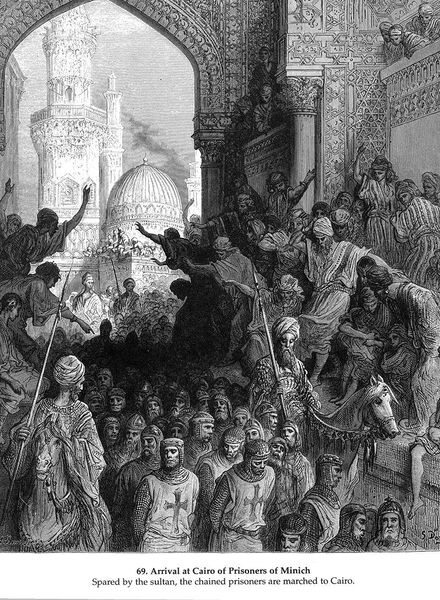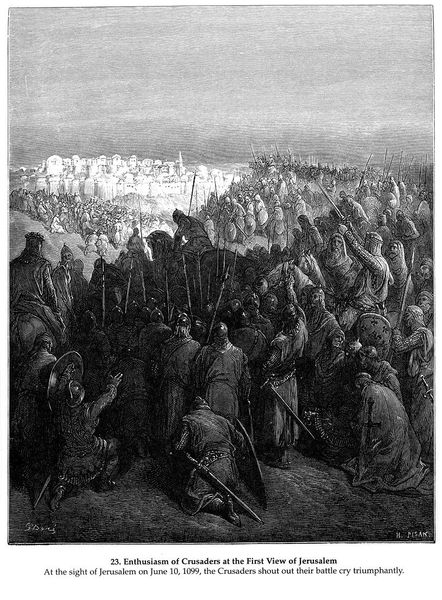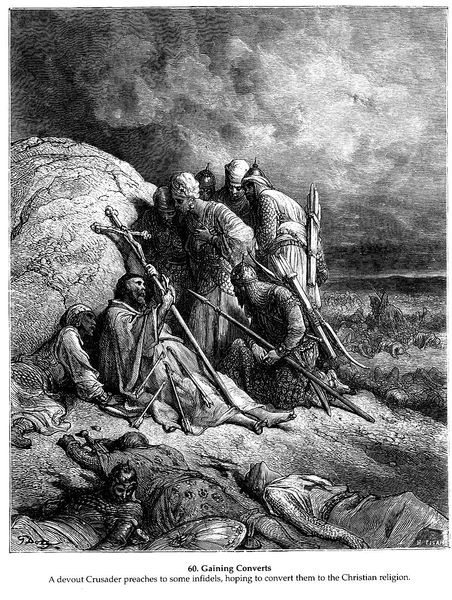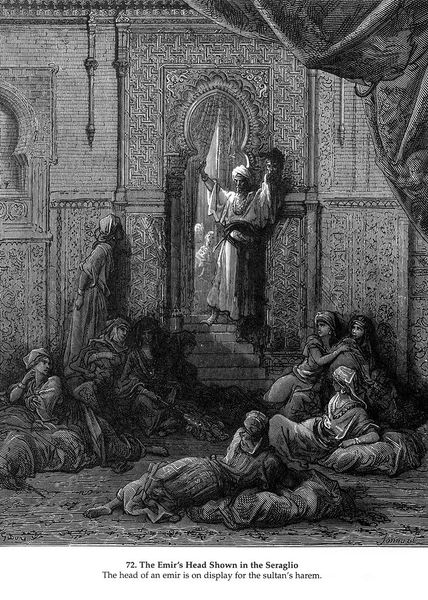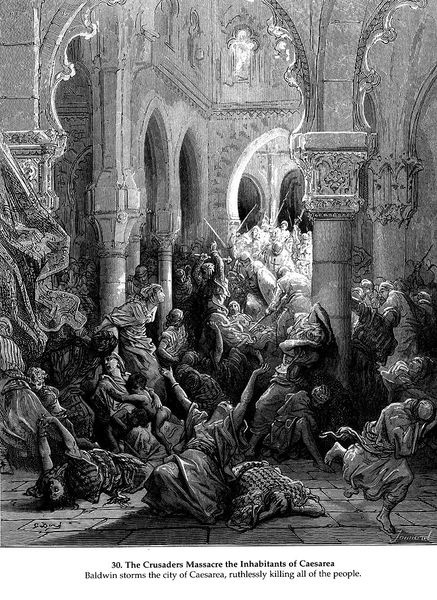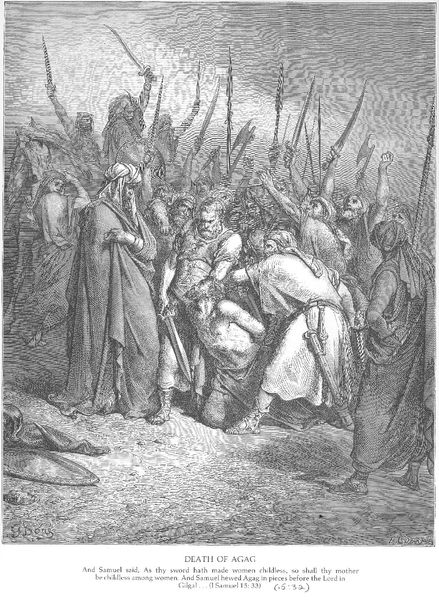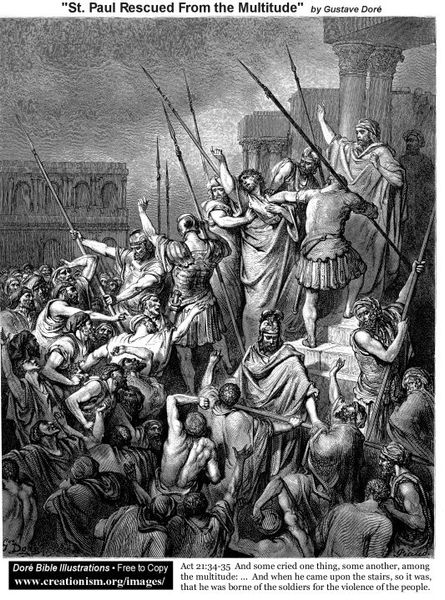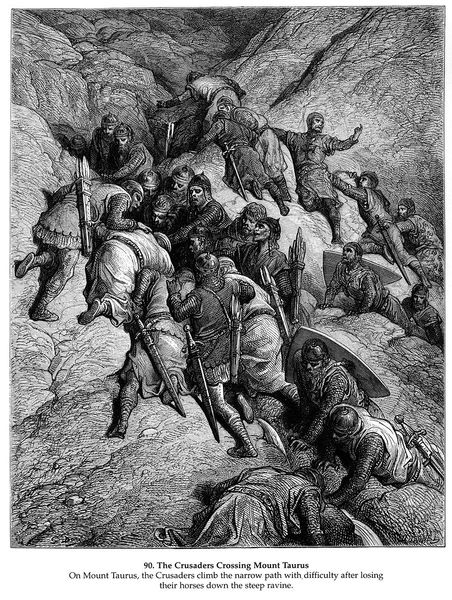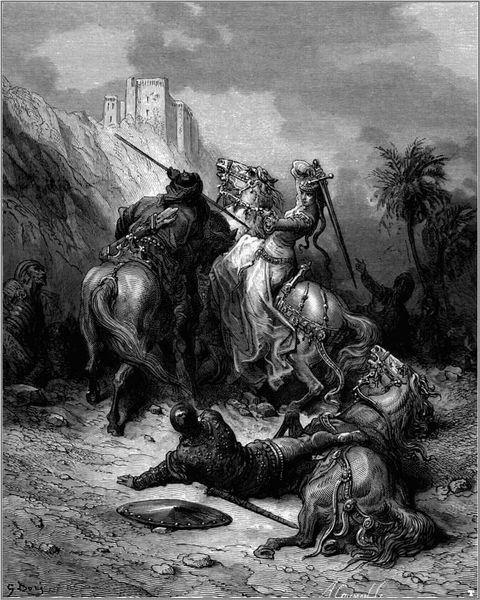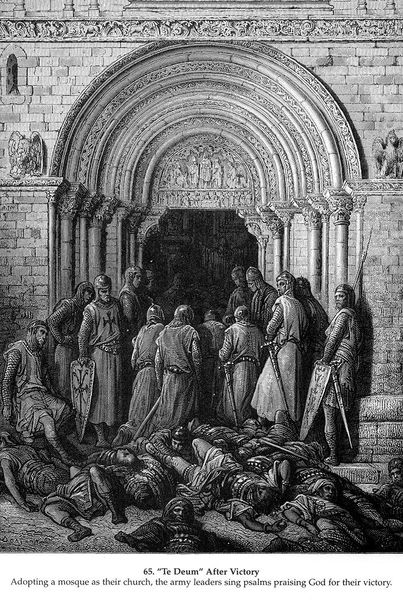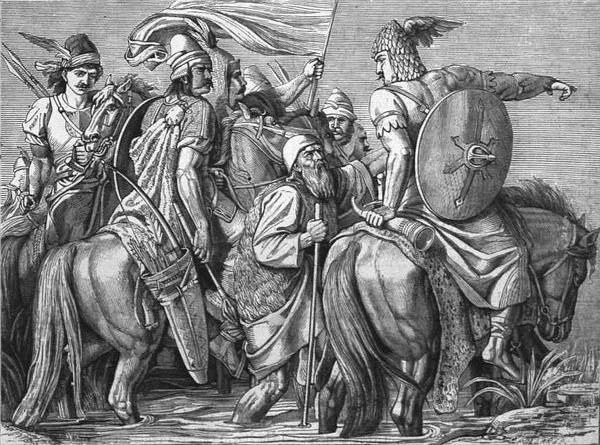
drawing, ink, pen, engraving
#
drawing
#
narrative-art
#
charcoal drawing
#
figuration
#
charcoal art
#
ink
#
highly detailed
#
romanticism
#
pen
#
history-painting
#
charcoal
#
engraving
Copyright: Public domain
Curator: I'm struck by the sheer density of figures here, almost a suffocating quality created by Gustave Doré in this drawing titled "St. Louis a Prisoner in Egypt." Editor: It feels undeniably dramatic, doesn't it? The black and white, highly detailed pen and ink engraving really intensifies the subject’s distress. You can practically feel the confinement. I wonder how the original production affected distribution of the image—the economic access for some viewers versus others at that time? Curator: It's important to contextualize this scene. Louis IX, a king of France, was captured during the Seventh Crusade in the 13th century. Doré, working much later, taps into the romanticism inherent in this narrative – the clash of cultures, the figure of the stoic king embodying European ideals in the face of the "Orient." Editor: Absolutely, we shouldn’t shy away from that imperialistic context when looking at representations of "the other," no matter the mastery in its lines or romantic appeal. I notice the faces surrounding St. Louis have exaggerated features, a type that circulated commonly. Curator: Precisely. Consider Doré's intended audience; this was meant to resonate with 19th-century European sentiments. The work reflects both an interest in historical events and also reinforces colonial power dynamics that placed Europe as the epicenter of all greatness and virtue, even if facing defeat. Editor: The artistic decisions highlight this power imbalance too. He’s centrally located, haloed. Whereas the surrounding Egyptians or North Africans form this anonymous mass reaching towards him. You have to consider the artist’s own investment within this dynamic and his source materials. Curator: The engraving process itself would've required a skilled workshop and investment, reinforcing art's role as an industry deeply connected to prevailing cultural biases. Doré's image, rendered with such exacting detail, thus functions as both a historical illustration and a commentary on European identity. Editor: In the end, the value is perhaps in understanding what we *read into* such materials when looking at it today. How does our viewership impact our reading, and the historic interpretations we draw from his process? Curator: Precisely, by analyzing the cultural underpinnings, it provides space for us to rethink not only historical perspectives, but modern biases when examining classic material like this one.
Comments
No comments
Be the first to comment and join the conversation on the ultimate creative platform.
